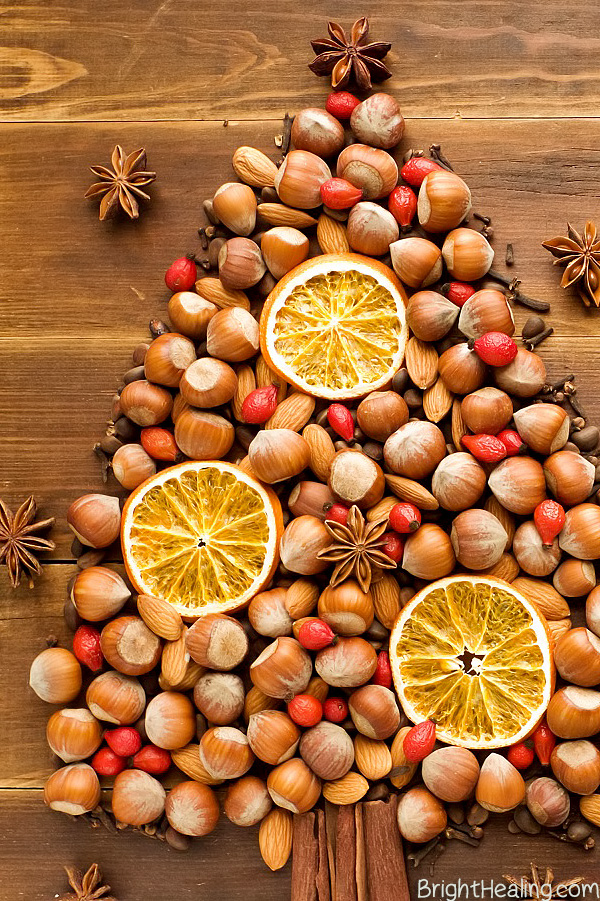Chestnuts (Castanea), also known as chinquapin and chinkapin, are a nut, a hard-shelled seed of the chestnut tree. Chestnuts are produced by seven species of tree within the Castanea genus. They have creamy white sweet flesh which appears in a number of cuisines, most famously roasted as a holiday food.
Chestnut trees also provide valuable timber. Chestnuts can be found for sale in a number of forms, depending on the region of the world that the consumer is in. During the winter, many countries in the Northern hemisphere have whole fresh chestnuts for sale, but chestnuts can also be found preserved in water or syrup, or ground into flour.
Chestnuts have been a valued food source in many cultures, notably those of China, Korea, Japan and the Mediterranean, and have been cultivated for more than 6,000 years in China and 3,000 years in Europe, according to Richard Litz, author of the book “Biotechnology of Fruit and Nut Crops.”
Best Health Benefits of Chestnuts
Source of Antioxidants
Chestnuts are a good source of antioxidants, which are required by the body to combat aging, both on the skin and internal organs. Antioxidants prove beneficial since they kill free radicals on the skin and in the body, which would otherwise bind themselves with living cells and weaken tissue functioning; on the skin, this can be seen in the form of wrinkles
Source of Fiber
Each ounce of roasted chestnuts provides 1.4 grams of dietary fiber. Dietary fiber can help lower your total and unhealthy LDL cholesterol levels, according to Mayo Clinic. Fiber can also help prevent constipation and stabilize your blood sugar levels. Healthy adults should get at least 14 grams of fiber for each 1,000 calories in their diet, but the average intake is less than half of that recommendation, according to the Department of Health and Human Services. You can have roasted chestnuts for snacks and in lunch and dinner recipes to help you meet fiber intake recommendations.
Stable Energy Levels
Most nuts are low in carbohydrates, which is why they often are part of low-carb diet plans. Chestnuts, however, have a high amount of carbs. They contain 45 grams per 3-ounce serving. Carbs are needed for short- and long-term energy, and they help with nervous system function.
The fat-soluble B vitamins help produce red blood cells, break down protein, carbs and fats for energy, promote healthy skin and enhance brain function. Chestnuts have a generous blend of B vitamins in moderately high amounts. A 3-ounce serving contains 21 percent of the recommended daily value of B-6, 15 percent of folate, 14 percent of thiamine and 9 percent of riboflavin.
Chestnuts acts as a tonic for the muscles, nerves and veins and reduce capillary permeability. To treat hemorrhoids, varicose veins and thrombophlebitis, it is advisable to eat one bowl of sweetened chestnut puree with honey before breakfast and dinner. It is a diet that should be kept for several weeks.
Roasted chestnuts for beauty and happiness
Roasted chestnuts and internal benefits are complemented by cela “surface”: a mixture of core chestnuts and honey and used as a mask helps skin to effectively fight acne and chestnut tincture is a valuable remedy for varicose veins. Vitamin E and essential fatty acids in a serving of roasted chestnuts gives hydration, roasted chestnuts beauty and skin elasticity, giving you a helping hand in the fight against time … relentlessly.
And the effect is complete, the magnesium is a true antidepressant roasted chestnuts, removing fatigue, anxiety and nervousness and revived the nervous system.
Chestnuts are unique while comparing to other nuts. It can also be treated as vegetables and fruits. This is must for people to have healthy life. Chestnuts nutrition facts like mineral, vitamins. Proteins and carbohydrates are more in it. Try following these health benefits of chestnuts and be healthy.

